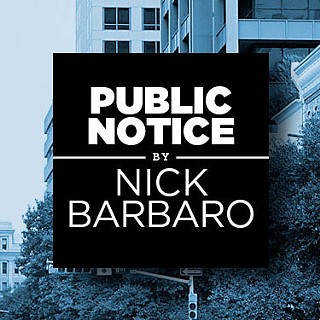Public Notice: Operating at Full Capacity?
We all need some slack ... and what ET (the tool) says about housing
By Nick Barbaro, Fri., Feb. 14, 2020
As we go to press, the Land Development Code rewrite rambles on at City Council. With three amendments down after Tuesday, 76 more to be debated and voted on (see "Learning to Code"), and some language still being drafted by various council offices, we're looking at late nights both Wednesday and Thursday, unless Council allows the debate to spill over past that.
Thankfully, there won't be any more discussion of housing capacity numbers. I say that partly because those numbers remain one of the silliest parts of the whole LDC discussion (see last week's column, "How Many Angels Fit in a Zone?"), but also partly because I made a dumb mistake in that column, which I hate. I wrote that the count of citywide housing capacity assumes that no housing will be added in any residential zones in the new code. But in fact, there is an increase projected in the transition zones – R3, R4, and RM1 – of some 11,374 units. Not zero. Sorry. The bulk of the 400,000 or so units will come from denser multifamily zones, plus mixed-use, Downtown, and the like.
It's worth noting a few more things about these numbers, though. First, it remains true that staff projects that there will be zero accessory dwelling units, second units, or preservation bonus units added to any existing houses in other residential zones – what's currently called single-family zoning. That's because their Envision Tomorrow tool judges that such developments don't make economic sense. A homeowner might choose to build such a thing for their own reasons, but a developer couldn't make it work "based on market conditions and land cost."
Second, given those criteria, the ET tool ("ET make home"?) apparently decided that maybe a 10th of the properties in the transition zones do make economic sense for a developer to buy and rebuild, thus yielding those 11,374 units. But analyses of the first draft of the map showed wide disparities between areas of town in which ET thinks it can make homes: The Eastside is still a good buy; Duval and Enfield, not so much. The new draft removed most of the transition areas on the Eastside, and there hasn't been time to see that sort of analysis of the new map before Council finishes voting on it.
And what's the hurry, again? That hasn't really been articulated, beyond the fact that it's tedious and everyone is tired of dealing with it. But again, given that this is supposedly a once-in-a-generation process and the amendments being passed show that there's work left to be done and improvements are being made, you'd think it could be done with full information available and at times of day when all relevant parties are awake.
Meanwhile, the lawsuit claiming that property owners have protest rights over rezonings in the LDC rewrite, originally set for Feb. 18, has been postponed to Monday, March 9, with plaintiffs' attorney Doug Becker saying the "short postponement of the trial will still facilitate a quick answer."
Got something to say on the subject? Send a letter to the editor.











